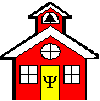Education and Human Sciences, College of

Department of Educational Psychology: Faculty Publications
Document Type
Article
Date of this Version
June 2002
Abstract
In this exploratory study, the communicative process in conjoint behavioral consultation was investigated with a coding system designed to measure two dimensions of communication (i.e., influence and involvement). The nature of discrete speech acts that typify consultants’ and consultees’ behaviors in CBC (i.e., collaborative, controlling, obliging, withdrawing) and the communicative function of speech exchanges within CBC (i.e., affiliation, distancing, mixed) were investigated. An initial exploration of the relationship between speech exchanges and direct and indirect outcomes in CBC was conducted. Results indicated that CBC meetings were characterized by a high degree of affiliation among participants; however, few significant relationships were identified between the exchanges and outcomes. Future research is recommended to address limitations of the present study and to advance the field’s understanding of how communication patterns in CBC may facilitate positive case outcomes.


Comments
Published in School Psychology Quarterly 17:3 (2002), pp. 299–324. Copyright © 2002 American Psychological Association. Used by permission. “This article may not exactly replicate the final version published in the APA journal. It is not the copy of record.” http://www.apa.org/journals/spq/